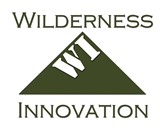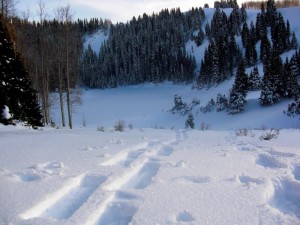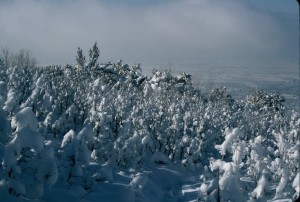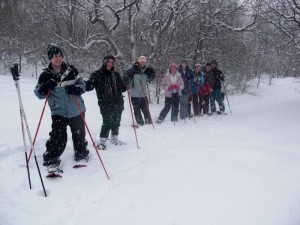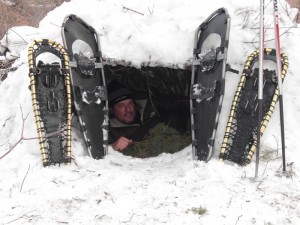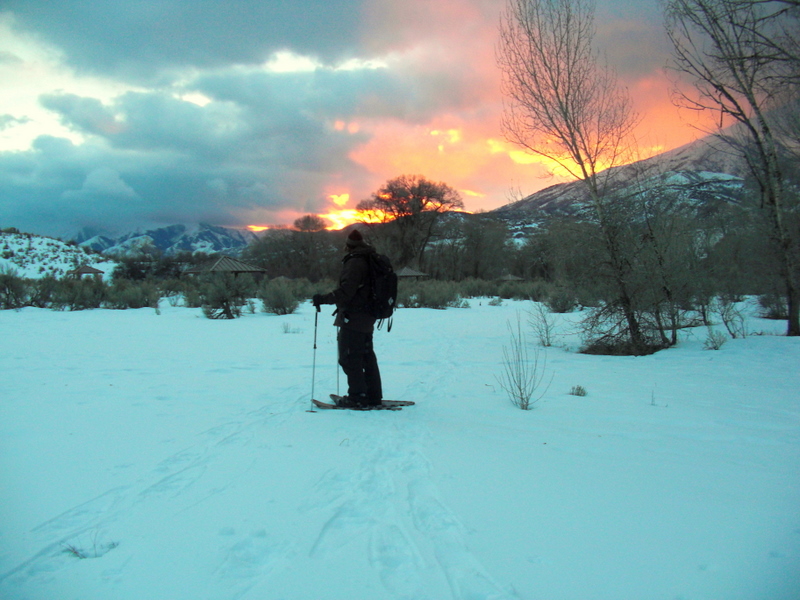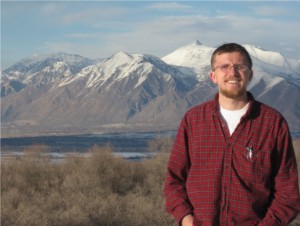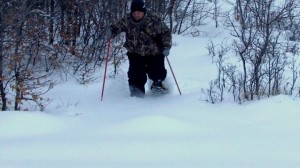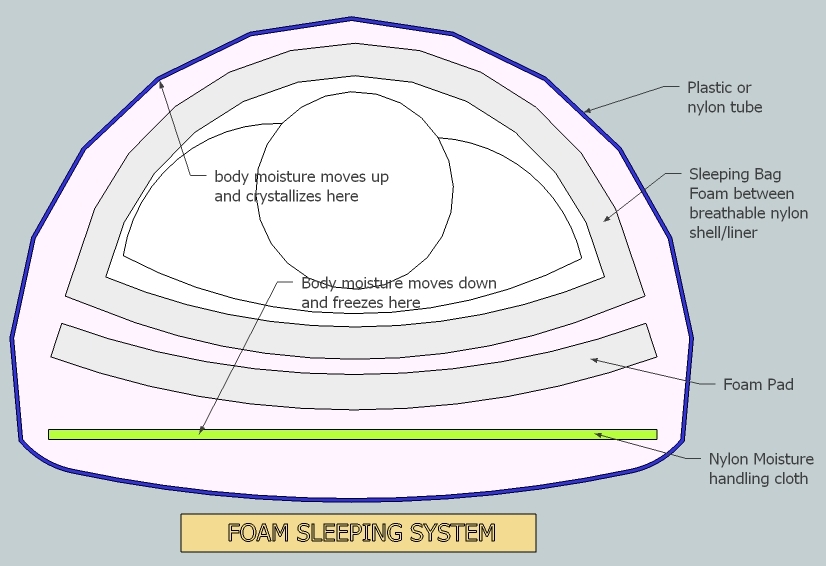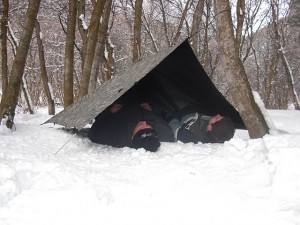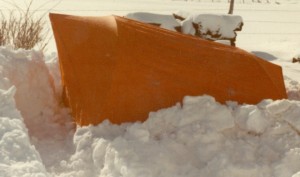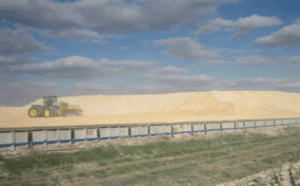In the my last blog I talked about how travel can be much easier at times on snowshoes. I also mentioned how I like to get not only off road, but off trail. In the photo at right we are close to 9000 feet elevation looking down on a lake frozen and covered with a thick layer of snow. On this trip we took advantage of a trail, then ventured off on our own to do some exploring. We found a nice sunny spot and broke out the backpack stove and cooked up some lasagna, very nice.
In this next shot you can see my tracks at the bottom as I came up through the heavily flocked brush and trees, I think it’s just beautiful when a storm rolls through leaving everything so thoroughly covered in snow.
Snowshoeing can be a very nice activity for family and friends as shown here. For me it’s extra nice to be out snowshoeing during snowfall as we see here. It adds quite a different experience to a trek. The snow fall quiets all noise, it’s just absolute silence. Your tracks are soon covered behind you.
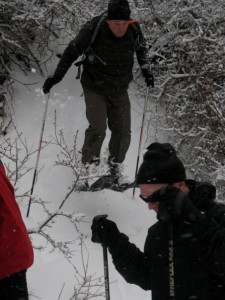
It’s also lots of fun to goof around while out snowshoeing. Here I am about to land after jumping off a ledge above the group.
Snowshoeing is much more than just fun, it can also be valuable as a means to travel out of the deep woods in the event of some sort of mishap or breakdown. These day snowmobiles can travel so far and so fast, that 30 minutes of travel on the machine can get you back in so far that it could take a whole day on foot to get out, if you are lucky. In deep snow travel on foot can be nearly impossible, it is incredibly slow, and can very quickly exhaust a person. Snowshoes distribute your body weight over a wide area, enabling you to stay near the surface, instead of sinking in up to your waist or worse.
One time I was out in very deep powder on the North slope of a mountain that never saw the sun, the snow was nearly bottomless, even with my 36 inch long snowshoes I was sinking in nearly to my waist. Dragging through all that snow was tiring, so I thought it might be less effort to trudge through the snow without the snowshoes. I soon found the error of that decision, as I sank over my head in the deep light powder. At first it was a bit scary since I could not seem to get back to the surface. After about 30 minutes of effort packing in steps in the snow, I was finally able to get to the top, and was glad to get my snowshoes back on. Imagine being stranded without snowshoes at all in those conditions! At the time we created a folding snowshoe that could be stashed on a snow machine in case of just such an emergency.
Well I’m hoping for a bit more snow before spring starts, just a little more snowshoeing would be nice. Until next time this is Perry Peacock, have a great day!!
